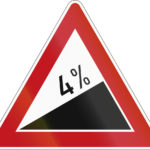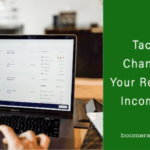By Jenny Hughes
Special to the Financial Independence Hub
The average American has close to $40,000 [US$ throughout] in non-mortgage debt, also known as “bad debt.” This debt will cost them close to $250,000 in lifetime interest and more than three quarters will die with unpaid balances.
It’s a tragic statistic, and it’s getting worse, which is why so many Americans [and many Canadians too!] are looking into programs like student loan debt relief, tax debt relief, and debt settlement, among others. But as effective as these programs are, the best money-saving methods begin at home.
In this guide, we’ll show you some ways to reduce your household bills, potentially saving hundreds of dollars a year, all of which can go toward clearing your debts.
Get rid of unnecessary subscriptions
North Americans are wasting vast sums of money on subscription services, most of which are underused and unnecessary. It’s such a prevalent issue, that we guarantee everyone reading this will have fallen into the same trap.
Don’t believe us? Here’s a quick test:
Without looking at your bank statements, calculate roughly how much you spend every month on digital subscription services, including TV services, online services, etc.,
If you’re like the average American, you probably calculated a total of between $50 and $80, which is respectable, but probably false.
Did you remember to include Netflix, Amazon Prime, Hulu? What about web domains, Xbox/Playstation subscriptions, loot boxes, and cloud storage services?
The problem with digital subscriptions is that they often cost just a few bucks and are purchased on a whim. The average consumer doesn’t think twice about purchasing them because what’s an extra $5 or $10 a month? But as more of these services are added, that extra $5 turns into $50, and before you know it, you’re spending $600 a year on services you don’t need.
A 2018 survey asked the same question to 2,500 participants and found a massive 84% grossly underestimated how much they spent on digital subscriptions. And this is just the tip of the iceberg, as there are also gym subscriptions, grocery deliveries, and countless other subscriptions that leech money from your bank account every month.
The trick is not to think about the monthly cost but to calculate the yearly one. $5 a month seems like a sensible choice for a new media subscription, especially if it means you can watch that new series everyone’s talking about. But what happens three years down the line when you forget to cancel and only ever watch one episode? You’ve just wasted $150 to consume 45 minutes of TV.
Make your Home more efficient
 Install energy-saving lightbulbs, low-flow toilets and shower heads; fix leaky faucets; insulate your doors and windows, and stop relying on costly air conditioning units. All these tips can reduce your monthly bills, but they’re just the tip of the iceberg.
Install energy-saving lightbulbs, low-flow toilets and shower heads; fix leaky faucets; insulate your doors and windows, and stop relying on costly air conditioning units. All these tips can reduce your monthly bills, but they’re just the tip of the iceberg.
American and Canadian households are filled with electrical devices — TVs, video gaming consoles, computers — and most of these are either active or on standby. They constantly draw a charge, which means you’re paying for them around-the-clock, and those charges can add up.
When a device is not in use, turn it off. This also applies to your heating, cooling, and lighting.
Watch those Food bills
The average family spends close to $3,000 on takeout and restaurant food, and roughly $7,000 on groceries. That’s $10,000 on food, and while it’s a necessity that can’t be avoided, how that money is spent desperately needs to change. Continue Reading…








